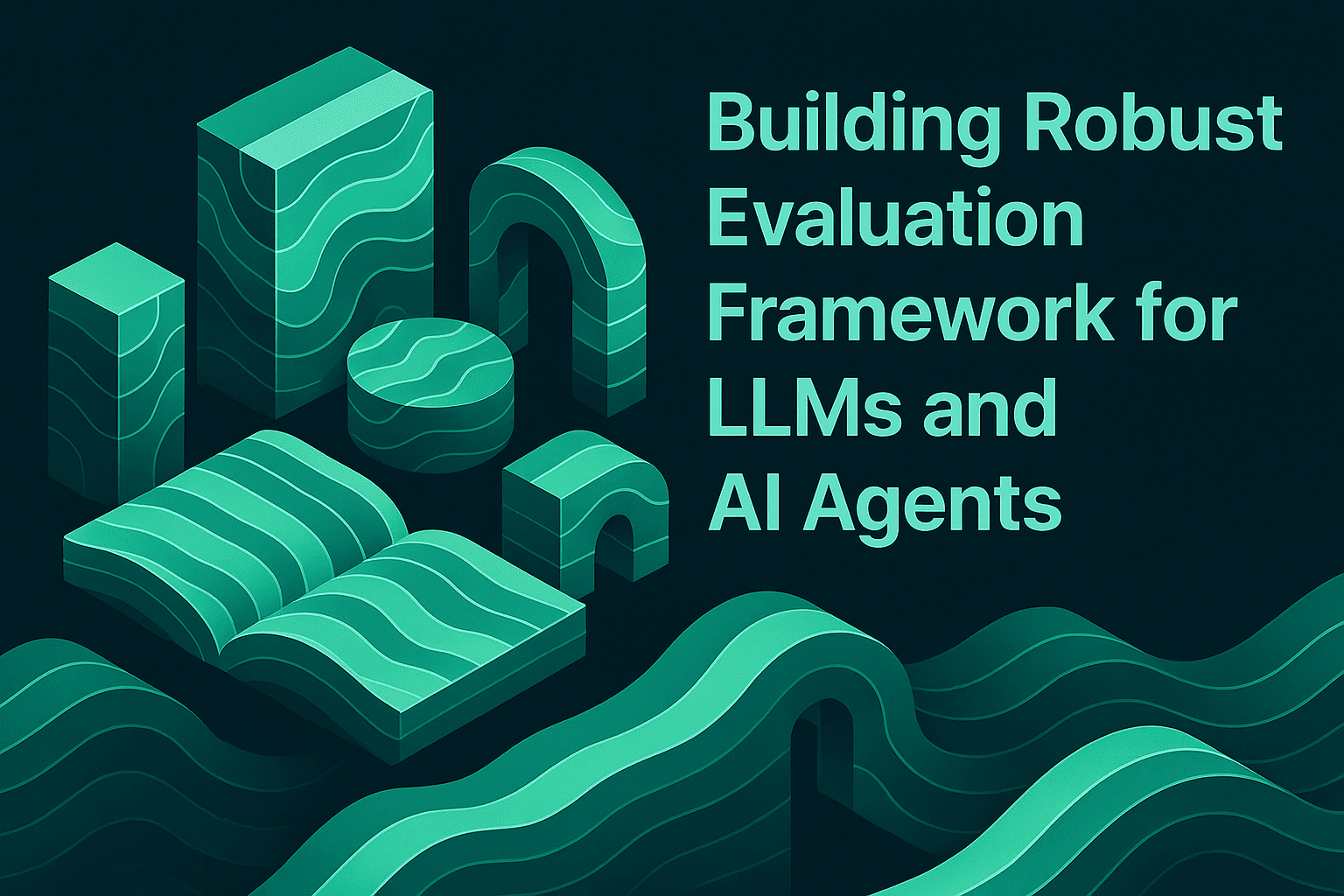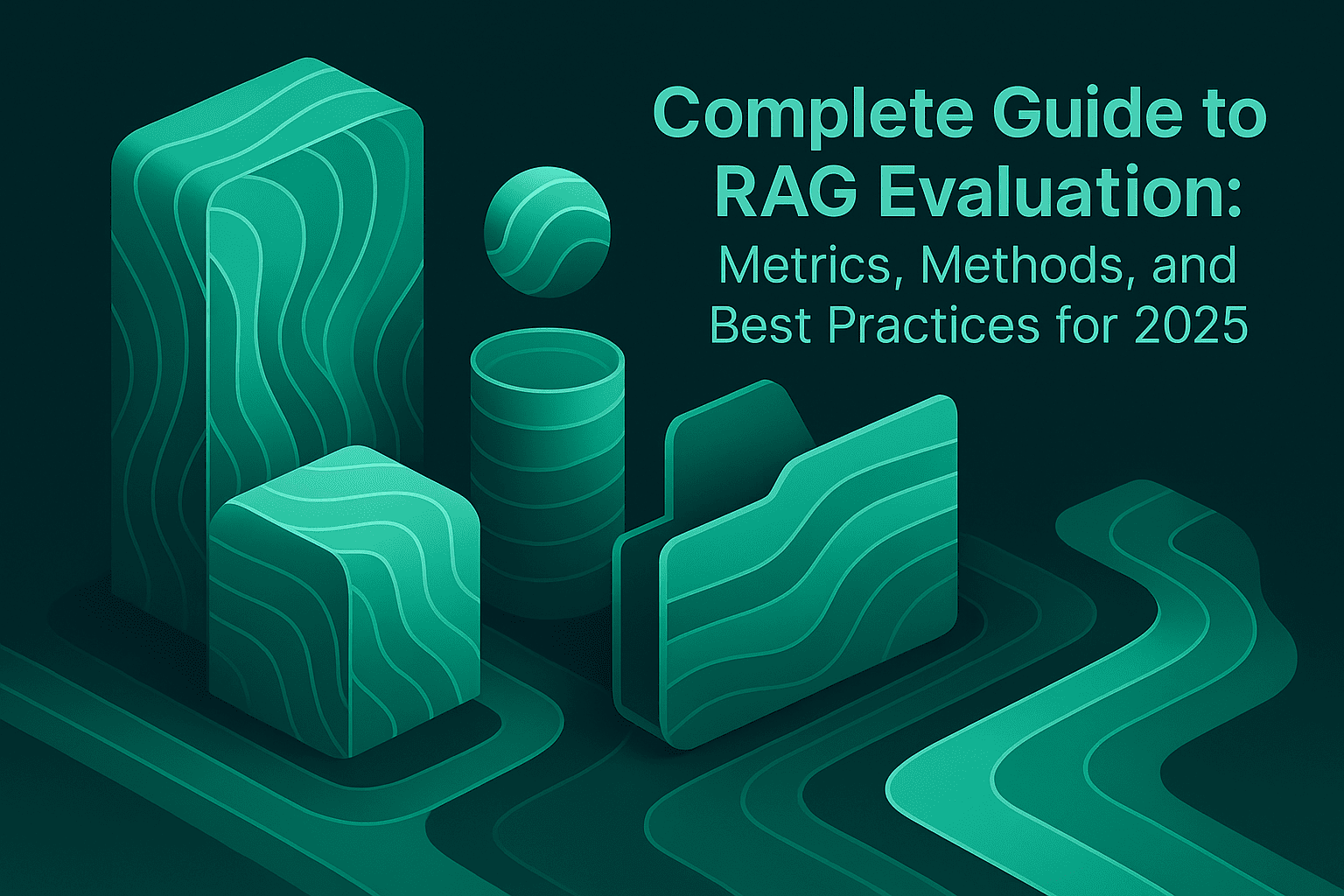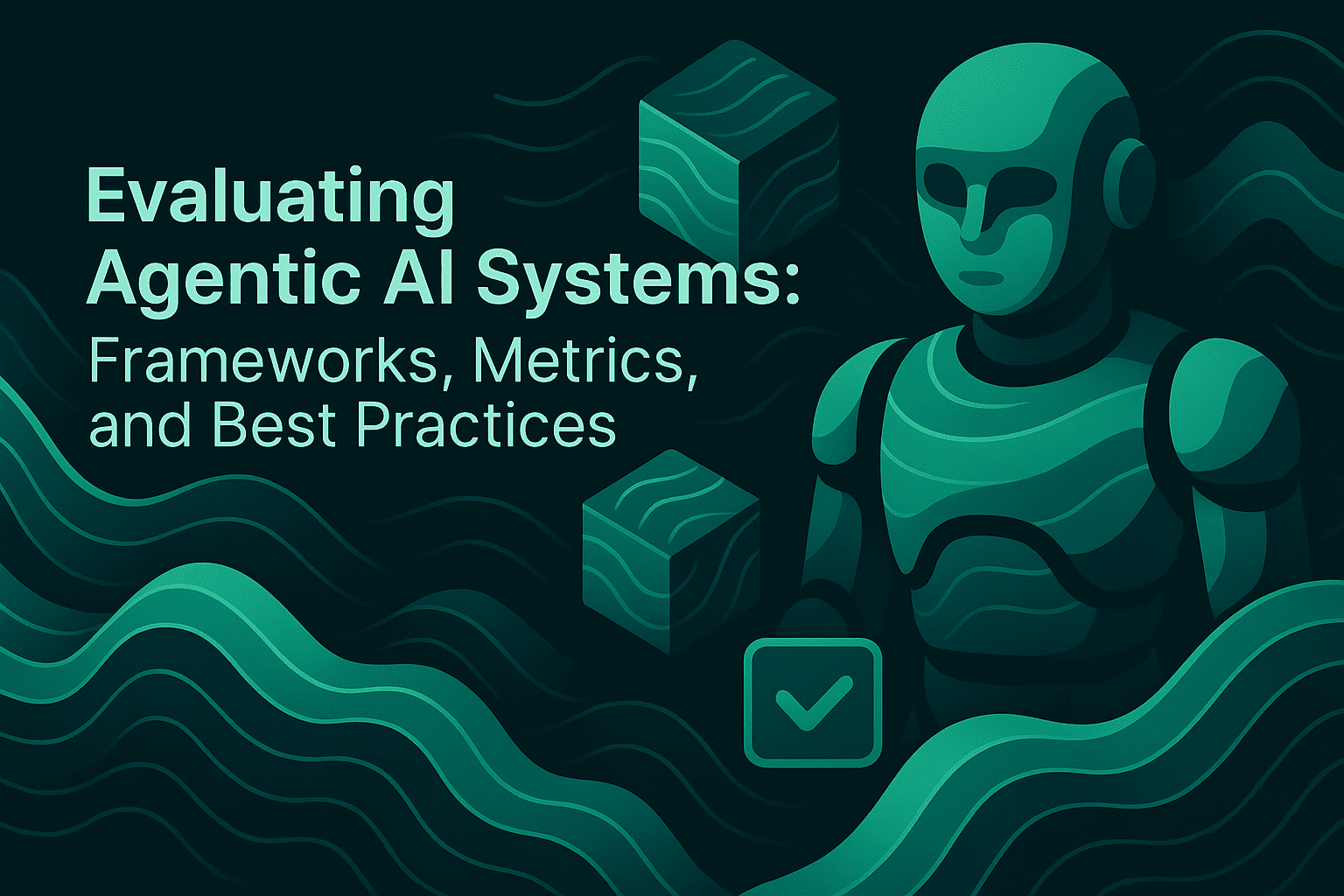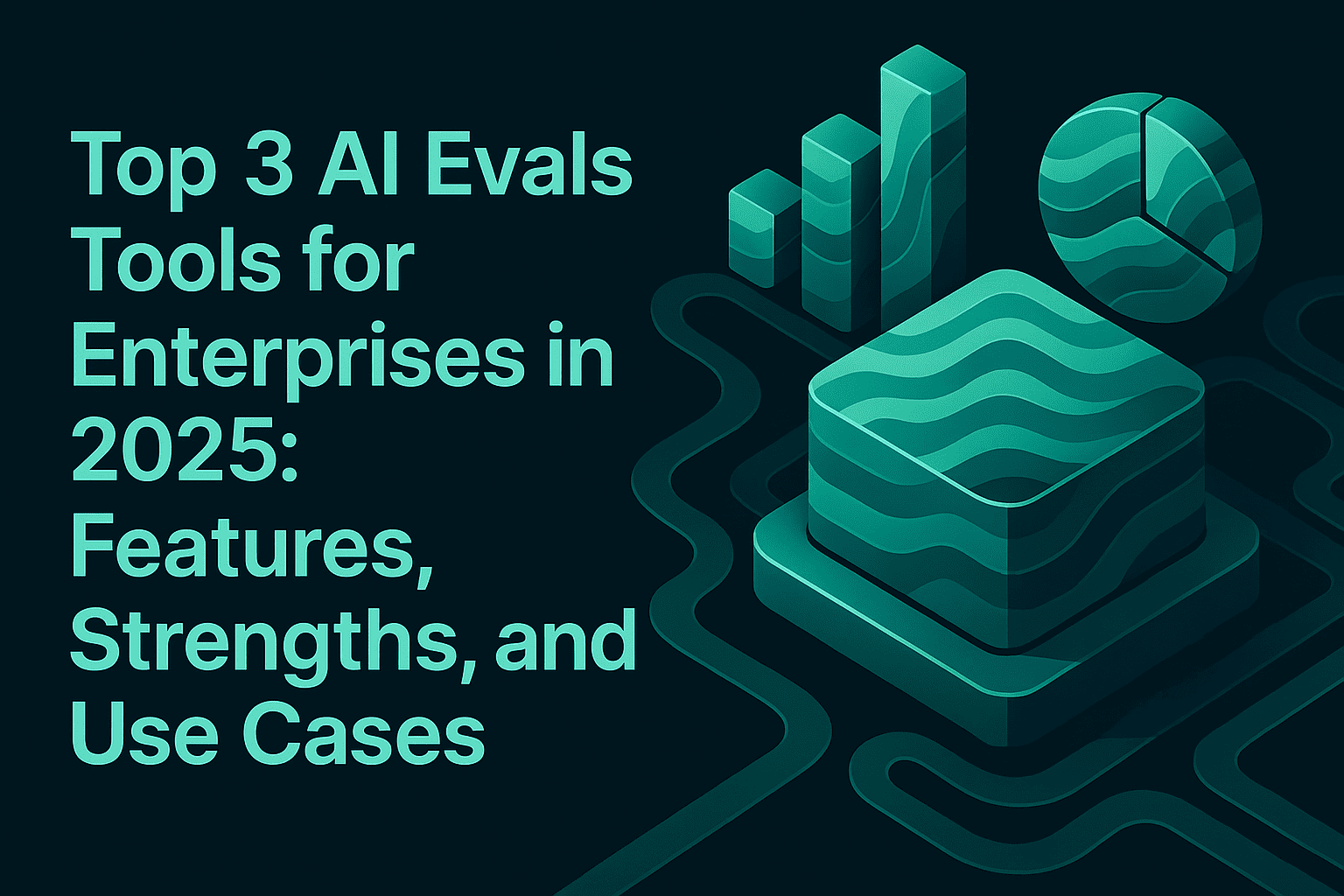Building a Robust Evaluation Framework for LLMs and AI Agents

TL;DR
Production-ready LLM applications require comprehensive evaluation frameworks combining automated assessments, human feedback, and continuous monitoring. Key components include clear evaluation objectives, appropriate metrics across performance and safety dimensions, multi-stage testing pipelines, and robust data management. This structured approach enables teams to identify issues early, optimize agent behavior systematically, and deploy AI systems with confidence.
Why LLM and AI Agent Evaluation Matters
The rapid adoption of large language models and autonomous AI agents has transformed intelligent application development. However, Accenture survey data shows that 77% of executives view trust, rather than adoption, as the primary barrier to scaling AI. This trust deficit stems from fundamental challenges including hallucinations, biased outputs, inconsistent tool usage, and unpredictable reasoning paths.
AI evaluation frameworks provide structured approaches to measure quality across multiple dimensions. Unlike traditional software systems with deterministic outputs, AI agents are probabilistic and adaptive, requiring evaluation approaches that assess overall agent behavior, task success, and alignment with user intent rather than just surface-level text quality.
The stakes are particularly high for AI agents that autonomously interact with external systems. Agent evaluation proves especially challenging because LLMs are non-deterministic, agents can follow strange paths and still arrive at the right answer, making debugging difficult.
Essential Framework Components
Defining Clear Evaluation Objectives
Before selecting metrics or building test suites, organizations must establish precise evaluation objectives aligned with business requirements. Different applications demand different priorities:
- Performance and Accuracy: Task completion rates, factual correctness, response relevance, and output quality
- Safety and Reliability: Bias detection, toxicity filtering, hallucination detection, and robustness to adversarial inputs
- Efficiency and Cost: Latency measurements, token consumption, API call patterns, and resource utilization
- User Experience: Coherence, clarity, conciseness, and alignment with user intent
Selecting Appropriate Evaluation Metrics
Evaluating LLMs requires a comprehensive approach employing various measures to assess different performance aspects:
Statistical Evaluators: BLEU and ROUGE scores measure textual similarity for translation and summarization tasks. Semantic similarity metrics using embeddings capture meaning beyond surface-level matching.
AI-Powered Evaluators: LLM-as-a-judge approaches automate quality assessment by comparing agent responses to predefined answers. Context precision and recall evaluators measure retrieval quality in RAG systems, while task success metrics determine whether agents complete objectives correctly.
Agent-Specific Metrics: Agent trajectory evaluators assess decision-making paths, while tool call accuracy evaluators measure whether agents invoke tools with correct parameters.
Programmatic Evaluators: Validators provide deterministic checks for structured outputs including JSON formatting, email addresses, and URL structures. SQL correctness evaluators verify generated database queries.
Implementing Multi-Stage Evaluation Pipelines
A synergistic blend of both online and offline evaluations establishes a robust framework for comprehensively understanding and enhancing LLM quality throughout the development lifecycle.
Offline Evaluation: Offline evaluation enables rapid iteration during development. Teams can test prompt variations, model configurations, and architecture changes against standardized test suites before deployment. The experimentation platform provides structured workflows for prompt engineering, enabling teams to compare output quality, cost, and latency across model combinations.
Online Evaluation: Online evaluation monitors live system performance, detecting issues that emerge only under real usage conditions. Auto-evaluation pipelines continuously assess production logs using predefined metrics, while alert systems notify teams when metrics degrade below acceptable thresholds.
Human-in-the-Loop: Human annotation workflows enable subject matter experts to review outputs, providing ground truth labels for training and validation. Human evaluation proves particularly valuable for subjective dimensions like helpfulness, creativity, and brand alignment.
Establishing Observability and Monitoring
Comprehensive observability infrastructure provides visibility into system behavior at every level:
- Trace logging records complete interaction histories including user inputs, model responses, and tool calls
- Generation tracking captures LLM invocations with prompts, completions, and latencies
- Tracing dashboards aggregate metrics across time windows and system components
- Error tracking surfaces exceptions with complete context for debugging
Advanced Evaluation Techniques
Simulation platforms enable systematic testing across diverse scenarios before production deployment. Text simulations model customer interactions across real-world use cases, while voice simulation capabilities test conversational AI systems under realistic conditions.
Integrate evaluation into CI/CD pipelines so that every code change, prompt modification, or configuration update triggers automated testing. SDK-based evaluation enables programmatic testing within code repositories.
Conclusion
Building robust evaluation frameworks for LLMs and AI agents requires comprehensive approaches that extend beyond simple accuracy metrics. The combination of experimentation platforms, simulation capabilities, and observability infrastructure enables teams to systematically improve AI applications throughout the development lifecycle.
Teams that establish rigorous evaluation practices ship more reliable systems faster, reduce production incidents, and build user trust. Ready to build a comprehensive evaluation framework for your AI applications? Sign up for Maxim to access end-to-end simulation, evaluation, and observability capabilities designed for production AI systems.


